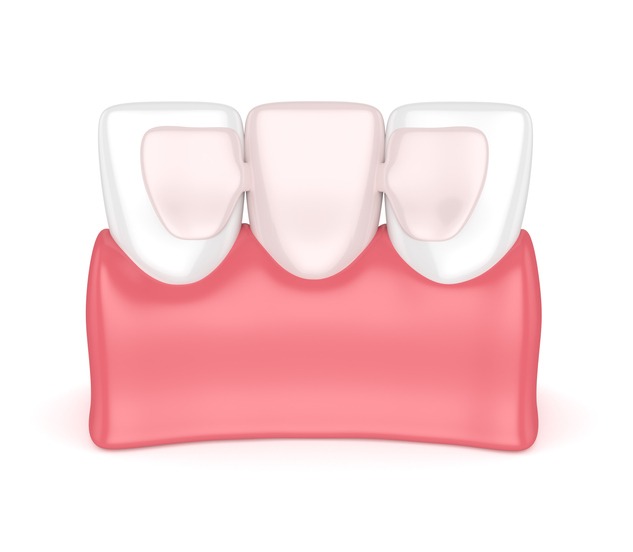In the intricate tapestry of restorative dentistry, Maryland dental bridges emerge as a distinctive and innovative solution for individuals seeking to reclaim the integrity of their smiles. This blog post endeavors to unravel the nuances of Maryland bridges, exploring their unique characteristics, benefits, and the transformative impact they wield in the realm of tooth replacement.
Maryland dental bridges, also referred to as resin-bonded bridges, represent a specialized category within the spectrum of dental prosthetics. This type of bridge diverges from the conventional by eschewing the use of dental crowns as anchor points. Instead, Maryland bridges employ a metal or porcelain framework equipped with wings on either side. These wings are delicately bonded to the rear surfaces of the adjacent natural teeth, creating a secure and aesthetically pleasing attachment.
Characteristics of Maryland Bridges
- Minimal Tooth Preparation: One of the distinguishing features of Maryland bridges is the minimal preparation required for the adjacent teeth. Unlike traditional bridges, where the neighboring teeth undergo substantial enamel removal for crown placement, Maryland bridges preserve the integrity of these teeth, requiring only a conservative preparation.
- Metal or Porcelain Framework: The backbone of Maryland bridges lies in their intricate framework. Crafted from metal or porcelain, this framework supports the pontic (artificial tooth) and the wings that facilitate bonding to the adjacent teeth. The material choice allows for a customized aesthetic that seamlessly blends with the natural dentition.
- Winged Attachment: The wings of a Maryland bridge play a pivotal role in its attachment. These wings, affixed to the back surfaces of the adjacent teeth, eliminate the need for crowns. The bonding process is meticulous, ensuring a secure fit while maintaining the structural integrity of the supporting teeth.
- Ideal for Front Teeth: Maryland bridges find a particular niche in the replacement of front teeth. Their conservative approach to neighboring tooth preparation and the ability to achieve natural aesthetics make them a preferred choice for enhancing the smile’s frontal appeal.
Benefits of Maryland Dental Bridges
- Conservative Tooth Preparation: Maryland bridges prioritize the preservation of natural tooth structure. With minimal enamel removal, the adjacent teeth are spared from extensive preparation, contributing to their long-term health and vitality.
- Aesthetic Seamlessness: The metal or porcelain framework, coupled with meticulous bonding, results in a seamlessly integrated restoration. Maryland bridges harmonize with the natural dentition, delivering an aesthetically pleasing outcome that enhances the overall smile.
- Quick and Non-Invasive Procedure: The placement of Maryland bridges is a comparatively swift and non-invasive procedure. The reduced need for extensive tooth preparation translates to a more comfortable experience for the patient, with minimal disruption to their daily routine.
- Versatility in Application: Maryland bridges are versatile and well-suited for various scenarios, especially when replacing front teeth. Their adaptability, combined with the ability to achieve precise color matching, makes them an attractive option for those seeking a natural-looking restoration.
Overview of the Maryland Bridge Procedure
- Consultation and Evaluation: The journey toward a revitalized smile begins with a comprehensive consultation. The dentist evaluates the patient’s oral health, discusses their specific needs and desires, and determines whether Maryland bridges are the optimal solution.
- Tooth Preparation: While Maryland bridges entail minimal tooth preparation, some adjustment may be necessary to ensure a snug fit. This step involves creating space for the wings to be securely bonded to the adjacent teeth.
- Impression Taking: A precise impression of the prepared teeth is captured. This serves as the blueprint for the fabrication of the Maryland bridge, ensuring a custom fit that aligns seamlessly with the patient’s unique dental architecture.
- Framework and Pontic Fabrication: The metal or porcelain framework, along with the pontic, is meticulously crafted to meet the specific requirements of the patient. This phase emphasizes the fusion of form and function, creating a restoration that not only looks natural but also functions seamlessly within the oral cavity.
- Bonding Process: The final step involves the bonding of the Maryland bridge to the adjacent teeth. The wings are delicately affixed to the back surfaces, and the bridge is secured in place. The bonding process is precise, ensuring both stability and an aesthetically pleasing outcome.
Conclusion:
In the realm of smile restoration, Maryland dental bridges stand as a testament to the artistry and innovation within modern dentistry. Their unique design, characterized by minimal tooth preparation and a winged attachment system, sets them apart as a compelling option for individuals seeking a natural-looking and conservative solution for missing teeth. From their versatility in application to the seamless aesthetic integration they offer, Maryland bridges exemplify the evolution of restorative dentistry, providing patients with a pathway to renewed confidence and oral well-being. If you’re considering a dental bridge, exploring the merits of a Maryland bridge with your dentist could be the key to unlocking the door to a revitalized and radiant smile.


